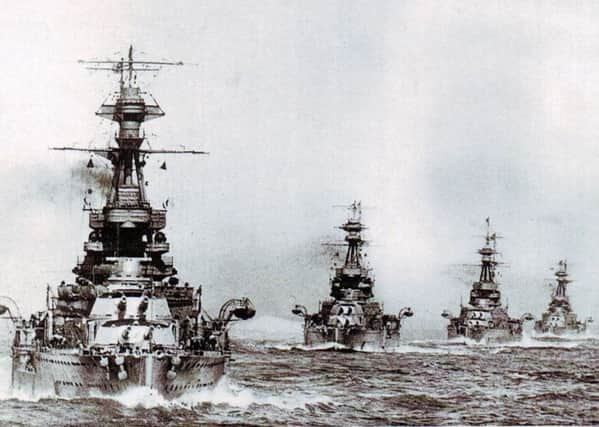Battle of Jutland exhibition opens


Thousands of people are expected to see the National Museum of the Royal Navy’s latest display, 36 Hours: Jutland 1916, The Battle That Won The War.
The exhibition is the first of its kind and comes a week before the centenary of the decisive First World War fight, in which more than 6,000 British sailors died.
Advertisement
Hide AdAdvertisement
Hide AdWorking with the Imperial War Museum (IWM), the display pieces together the chaos of the battle with the German fleet and the pivotal role the Royal Navy played in helping to win the First World War.
Running for the next three years, the exhibition has taken over the Historic Dockyard’s Boathouse No 5.
As well as live-action depictions of the epic battle, visitors had the chance to read first-hand accounts of those who witnessed the action.
Among them included a diary of Queen Alexandra’s Royal Naval Nursing Service Nurse Mary Clark who tells of her service as a naval sister in the Grand Fleet hospital ship Plassy.
Advertisement
Hide AdAdvertisement
Hide AdThe item is part of the IWM collection and describes Mary’s ordeal treating casualties from the engagement.
Also featured is a lifebelt belonging to William Loftus Jones, English recipient of the Victoria Cross and commander of HMS Shark which sunk during the battle.
The lifebelt was recovered from the body after being washed ashore following the battle, and is featured alongside a photograph of Shark survivors.
Elsewhere, there is a large gun from German destroyer B98 and two smaller deck guns from HMS Opal and HMS Narbourgh,
Advertisement
Hide AdAdvertisement
Hide AdDiane Lees, director-general of IWM was key in helping Portsmouth host the display.
She said: ‘The Battle of Jutland had a huge impact on the war; never again during this landmark conflict did the Germans challenge British control of the North Sea. Yet it is one of the lesser known Battles to be commemorated this year.
‘Over 80 items from our collections are being loaned to the museum, some of which have never been seen before. They will reveal to generations today the stories of the brave sailors who fought in terrifying conditions at Jutland, and allow people to reflect and remember the 6,000 men who lost their lives at sea.’